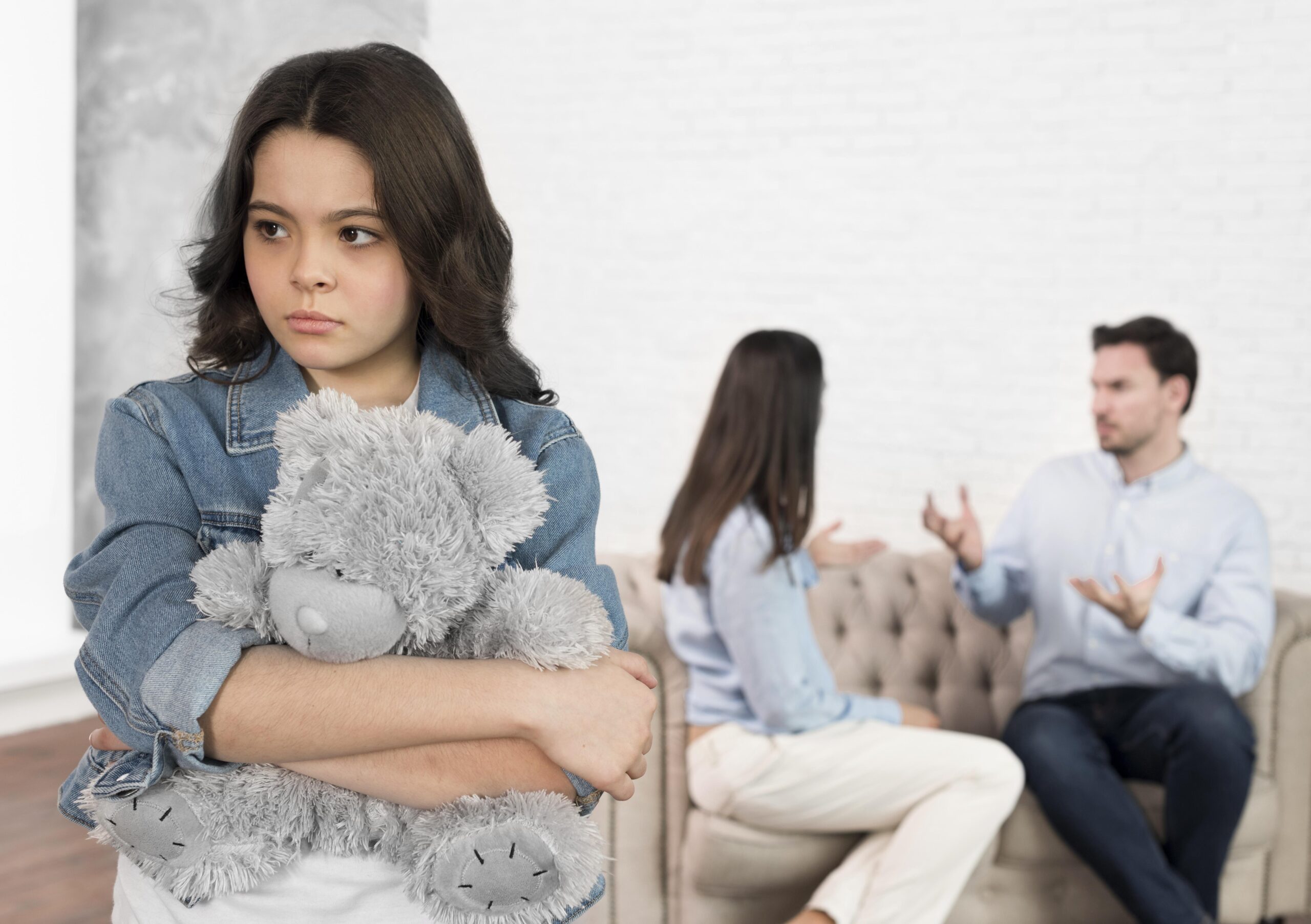How Can You Manage Your Separation Anxiety Disorder | Dr. Harel Papikian
Introduction
For many, the idea of separation anxiety brings to mind children who struggle to spend a night away from home. But what often goes unnoticed is that separation anxiety disorder in adults is very real, and it can disrupt relationships, careers, and day-to-day life. Living in a bustling city like Los Angeles—where work often pulls people into long commutes, travel, and hectic schedules—makes this condition even more challenging.
In this article, we’ll explore the symptoms of separation anxiety in adults, its root causes, real stories from individuals in Los Angeles who have faced it, and practical steps you can take to manage it. Toward the end, we’ll also share how local professionals like Dr. Harel Papikian support individuals in overcoming this struggle.
What Is Separation Anxiety Disorder in Adults?

Separation anxiety disorder in adults goes beyond the occasional worry about being apart from loved ones. It is a clinically recognized mental health condition where the fear of separation becomes so intense that it disrupts daily functioning. Many adults benefit from anxiety therapy, which helps them manage the overwhelming sense of dread they feel at the thought of being away from a person they are deeply attached to—whether that’s a spouse or partner, parent, child, or even a close friend.
Would you like me to also sprinkle “anxiety therapy” a few more times across different sections of your article for SEO without making it sound repetitive?
Unlike normal attachment or concern, this anxiety is persistent and excessive. A person may cancel social plans, avoid work-related travel, or constantly check in on their loved ones to reassure themselves that everything is okay. These behaviors may provide temporary relief but often reinforce the cycle of anxiety.
In cities like Los Angeles, where long commutes, busy work schedules, and competitive industries can already strain relationships, separation anxiety often gets dismissed as “stress” or “burnout.” But the difference lies in the intensity: while stress is situational, separation anxiety disorder lingers, interferes with decision-making, and impacts emotional well-being.
Signs and Symptoms of Separation Anxiety in Adults
Recognizing the signs is crucial because untreated separation anxiety can affect not just mental health but also professional growth and personal relationships. Here are the most common symptoms explained in depth:
- Persistent Worry About Losing a Loved One
- Adults with separation anxiety often live in a state of anticipatory fear. They may constantly imagine worst-case scenarios—like their partner getting into an accident, their child falling sick, or a parent passing away.
- This worry isn’t just fleeting concern; it is intrusive and uncontrollable, making it hard to focus on anything else.
- Extreme Distress During Separation

- Even short separations can trigger overwhelming anxiety. For example, if a partner is away on a work trip or simply delayed from coming home, the individual may feel panic, restlessness, or helplessness.
- This reaction often feels disproportionate to the situation, but the emotional response is very real to the person experiencing it.
- Difficulty Concentrating
- At work, adults with separation anxiety may struggle to stay present because their thoughts are consumed by fears about their loved one’s safety.
- This lack of focus can lead to mistakes, missed deadlines, or withdrawal from professional opportunities—further compounding stress and self-doubt.
- Sleep Disturbances and Nightmares
- Many adults with separation anxiety report trouble sleeping alone, frequent awakenings, or nightmares of abandonment, harm, or loss.
- Poor sleep not only heightens anxiety but also impacts productivity, mood regulation, and overall health.
- Avoidance Behaviors
- Business trips, social events, or even short vacations may be skipped to avoid being apart from loved ones.
- While this provides temporary comfort, over time it leads to isolation, missed career growth, and strained relationships, as others may perceive the avoidance as clinginess or unreliability.
- Physical Symptoms of Anxiety
- Anxiety doesn’t just stay in the mind—it manifests in the body. Adults with this disorder often experience headaches, stomachaches, nausea, or a racing heartbeat whenever separation is anticipated or occurs.
- These physical symptoms can mimic medical conditions, leading to frequent doctor visits, but the root cause is psychological distress.
Real-Life Stories from Los Angeles
To understand this better, let’s look at two anonymized yet relatable examples:
Case 1 – The Studio Executive
Rachel, a 38-year-old studio executive in Burbank, found herself unable to travel for film projects because she couldn’t bear leaving her husband. What seemed like “love and attachment” was actually a pattern of avoidance rooted in separation anxiety. She sought help when her career opportunities began slipping away.
Case 2 – The Young Parent in Santa Monica
David, a father of two, struggled every time his children went to preschool. He would experience racing thoughts and even chest tightness, worrying about accidents or illnesses. For him, the symptoms of separation anxiety felt like constant background noise, affecting both his parenting and his work as a graphic designer.
Both Rachel and David eventually found ways to address their challenges, but their stories highlight how this condition can quietly erode confidence and opportunities.
Causes of Separation Anxiety in Adults
Separation anxiety in adults doesn’t appear out of nowhere—it often has roots in earlier life experiences, emotional patterns, or even environmental pressures. Understanding the “why” behind it can help normalize the experience and open the door for healing. Here are some of the most common causes:
1. Childhood Experiences That Carry Over

For many adults, the seeds of separation anxiety are planted in childhood. If a child struggled with separation from parents, had an inconsistent caregiver, or experienced early losses, those unresolved feelings can resurface later in life. What might look like “clinginess” as an adult is often an echo of unmet emotional needs from childhood.
2. Traumatic Events and Losses
Life transitions—such as the death of a loved one, a painful breakup, or even moving to a new city—can trigger separation anxiety. Trauma creates a heightened sense of vulnerability, and the fear of losing someone again may become overwhelming. Even small separations, like a partner going on a trip, can feel threatening because the mind links it to past pain.
3. Overdependence on Relationships
Some adults place their entire sense of security in one relationship—be it a partner, parent, or even a close friend. While emotional bonds are healthy, overdependence can lead to intense fear when that person isn’t physically present. This dynamic can trap individuals in cycles of reassurance-seeking and anxiety.
4. High-Stress Environments

Living in a demanding city like Los Angeles, where people often juggle fast-paced careers, unstable housing, and frequent social changes, can intensify separation anxiety. The constant flux of people moving in and out of personal and professional circles makes it harder to build a stable sense of belonging, fueling feelings of insecurity.
The Emotional Toll of Separation Anxiety in Adults
Separation anxiety is much more than “missing someone.” It affects self-confidence, decision-making, and long-term emotional health. Adults who live with it may:
- Struggle with independence – They might avoid solo activities like traveling, pursuing new career roles, or even living alone.
- Stay in unhealthy relationships – Fear of being abandoned can cause people to cling to relationships that don’t serve their well-being.
- Experience chronic stress – The constant anticipation of separation leads to overthinking, poor sleep, and heightened physical symptoms like headaches or fatigue.
- Develop co-occurring conditions – Left untreated, separation anxiety can evolve into depression, generalized anxiety, or even panic attacks.
Over time, this cycle not only affects personal growth but also strains relationships, as partners or friends may feel overwhelmed by the intensity of reassurance-seeking behaviors.
Coping Strategies: How to Manage Separation Anxiety Disorder in Adults
Managing separation anxiety requires both short-term coping tools and long-term strategies. Here are some practical steps:
1. Identify Your Triggers
Keep a journal of moments when anxiety spikes—whether it’s a loved one leaving for work or a child attending school. Recognizing patterns makes it easier to prepare.
2. Practice Gradual Exposure

Start by spending small amounts of time apart and gradually increase it. For example, if your partner usually goes out for a few hours, practice staying calm during that window by engaging in an enjoyable activity.
3. Strengthen Your Independence
Pursue hobbies, classes, or social activities that don’t involve your loved one. In Los Angeles, this could be anything from joining a hiking group in Griffith Park to attending a cooking class in Culver City.
4. Use Grounding Techniques
Breathing exercises, progressive muscle relaxation, or mindfulness apps can help you stay anchored when anxiety strikes.
5. Challenge Anxious Thoughts
Ask yourself: Is this fear realistic? What evidence supports it? Reframing catastrophic thinking reduces emotional intensity.
6. Build a Support Network
Lean on trusted friends, community groups, or therapy circles in Los Angeles who understand what you’re going through.
7. Professional Therapy
Sometimes, symptoms become overwhelming. Talking with a mental health professional can make a significant difference. This is where experts like Dr. Harel Papikian, a Los Angeles-based psychologist, provide practical guidance tailored to individual needs.
When to Seek Professional Help
If your anxiety leads to:
- Consistently disrupted work performance,
- Frequent panic episodes,
- Relationship strain, or
- A sense of losing control…
…it may be time to consult a professional.
In Los Angeles, therapy is not about “fixing” you—it’s about equipping you with strategies that help you thrive in both personal and professional life.
How Dr. Harel Papikian Helps Adults with Separation Anxiety
Over the years, many Los Angeles residents have sought help from Dr. Harel Papikian to better understand and manage separation anxiety disorder. His approach focuses on practical tools and step-by-step guidance to help people face anxiety with clarity. Whether it’s learning how to manage daily panic triggers or strengthening independence, his sessions create a safe space for progress.
If you’re in Los Angeles and recognize these signs in yourself, reaching out for help could be the first step toward regaining balance.
Final Thoughts
Separation anxiety disorder in adults is more common than people realize. Its symptoms—from constant worry to physical distress—can silently disrupt life. But with awareness, coping tools, and professional support, it is entirely manageable.
Los Angeles may be a city of constant motion, but it’s also a city of opportunities for growth and healing. By taking proactive steps—whether it’s through journaling, building independence, or seeking therapy—you can reduce the weight of separation anxiety and reclaim confidence.
If you feel this article resonates with your experience, consider reaching out to professionals like Dr. Harel Papikian, who has supported many in Los Angeles on their journey to overcoming separation anxiety.

Leave a Reply